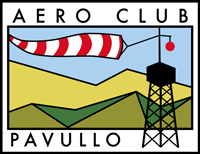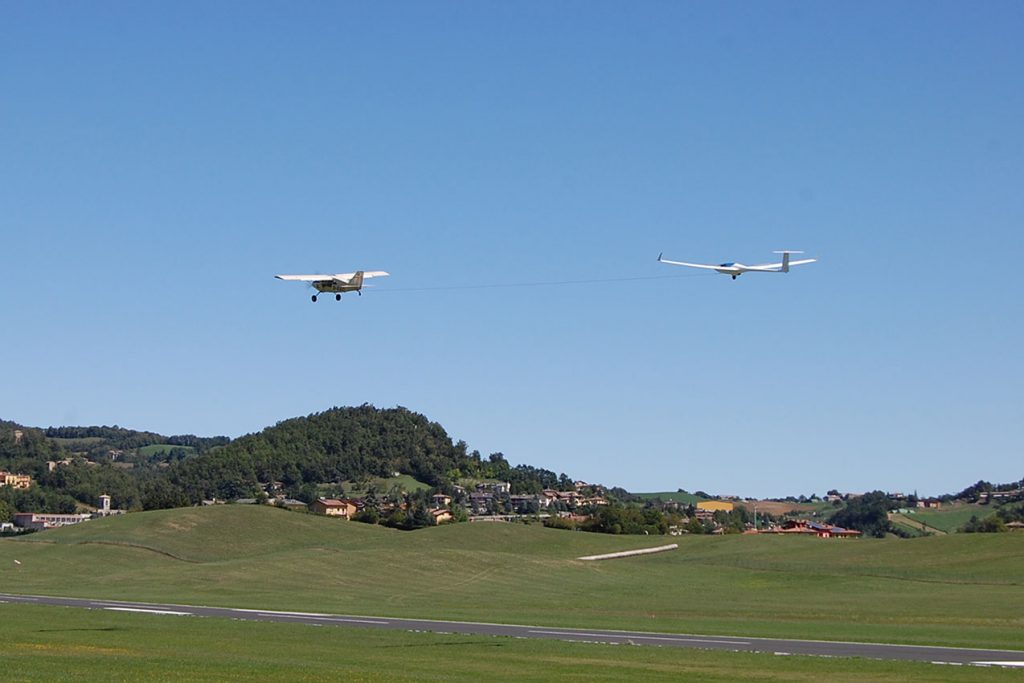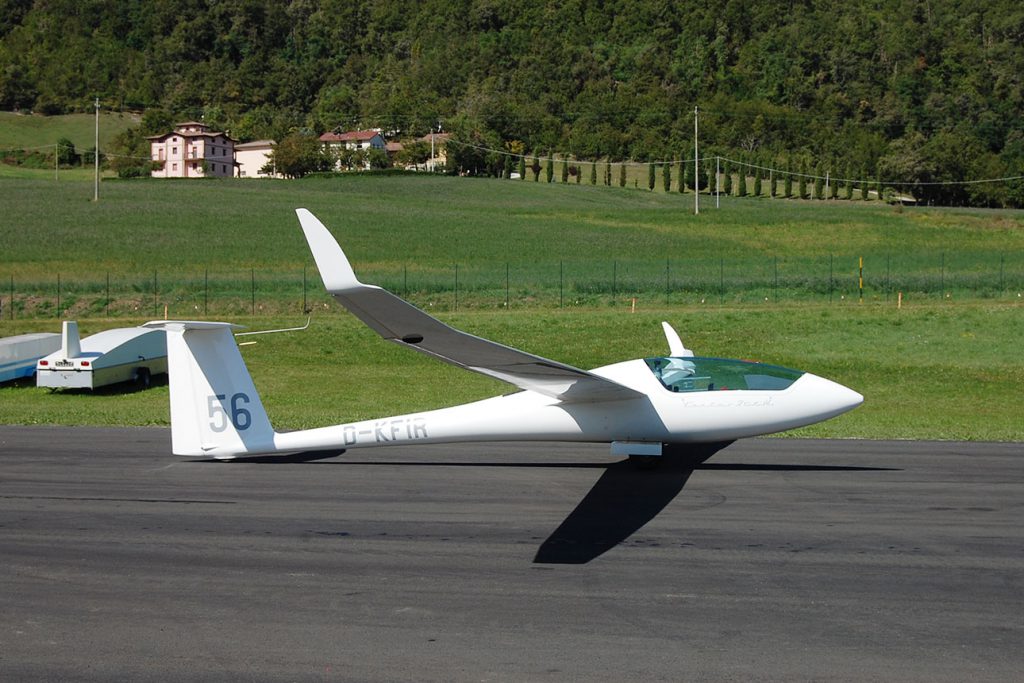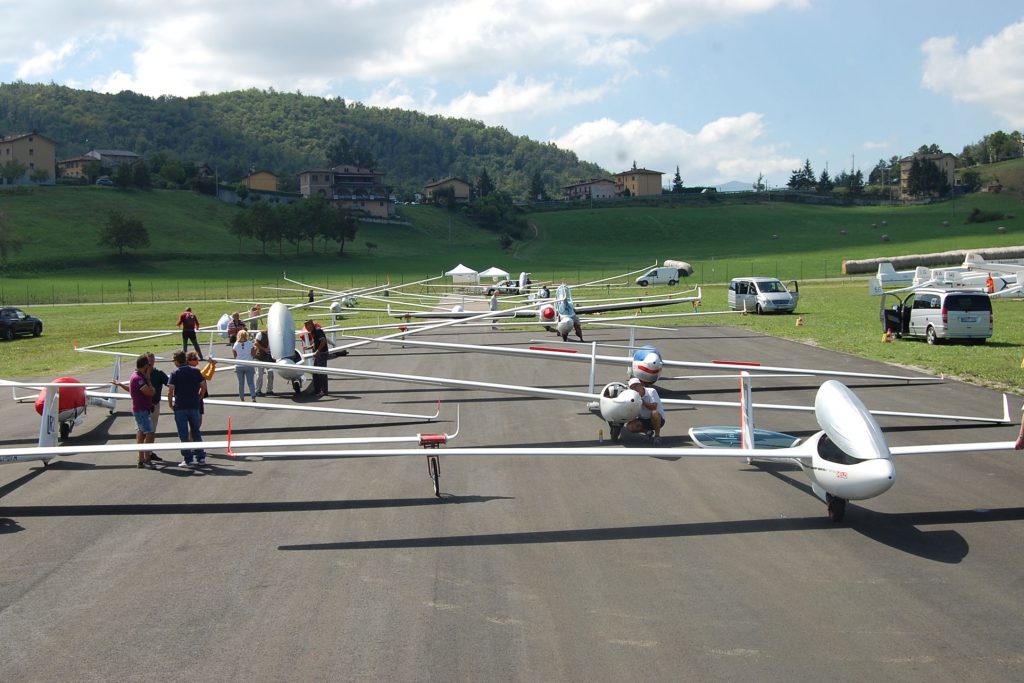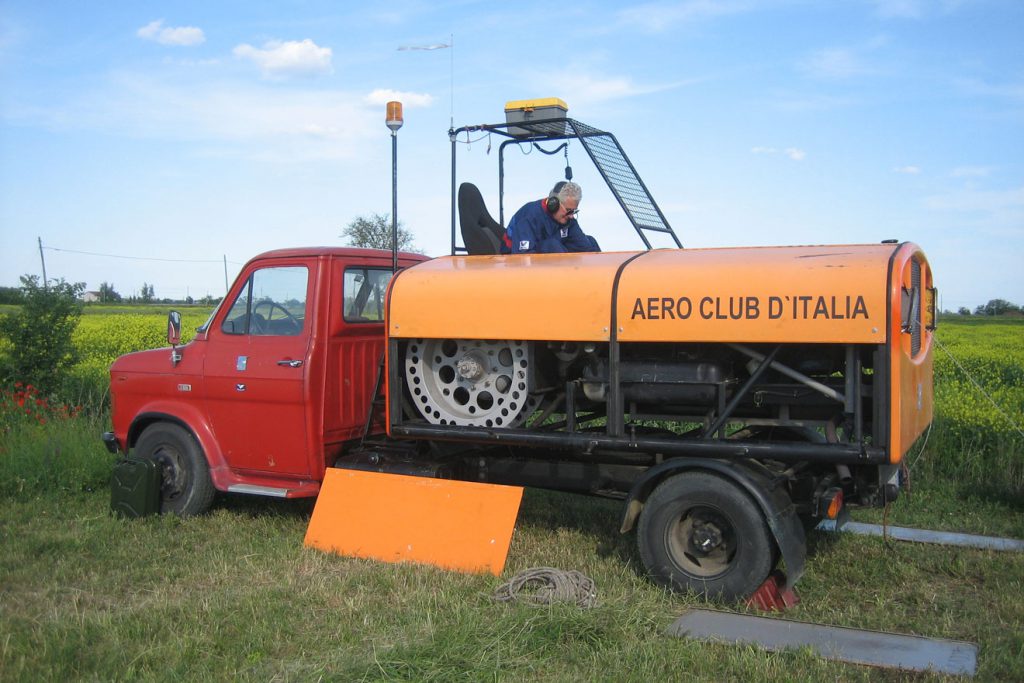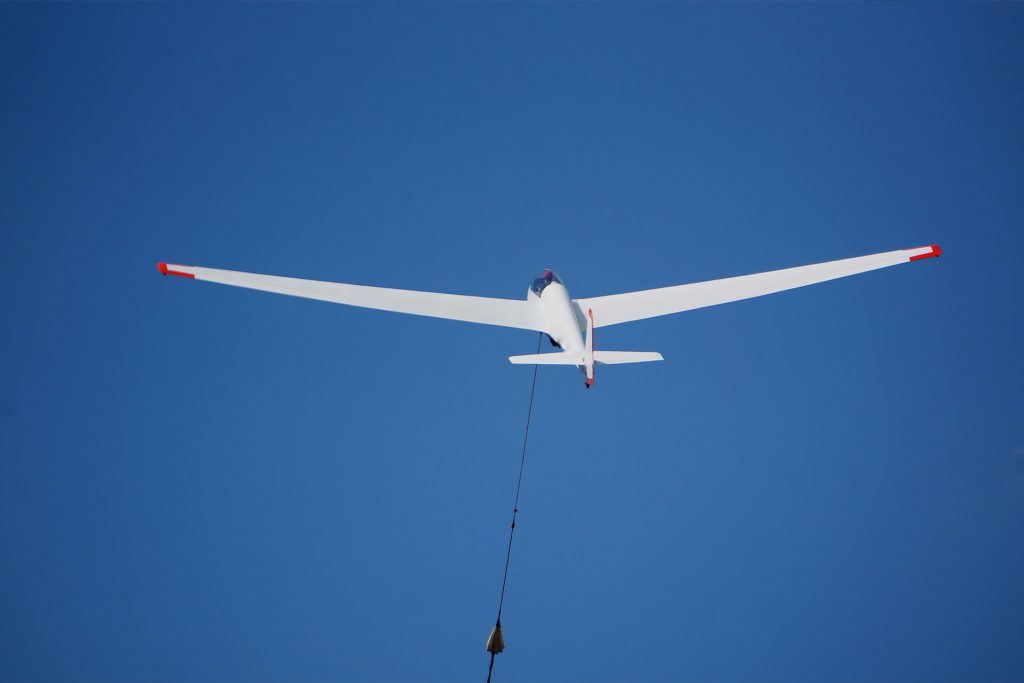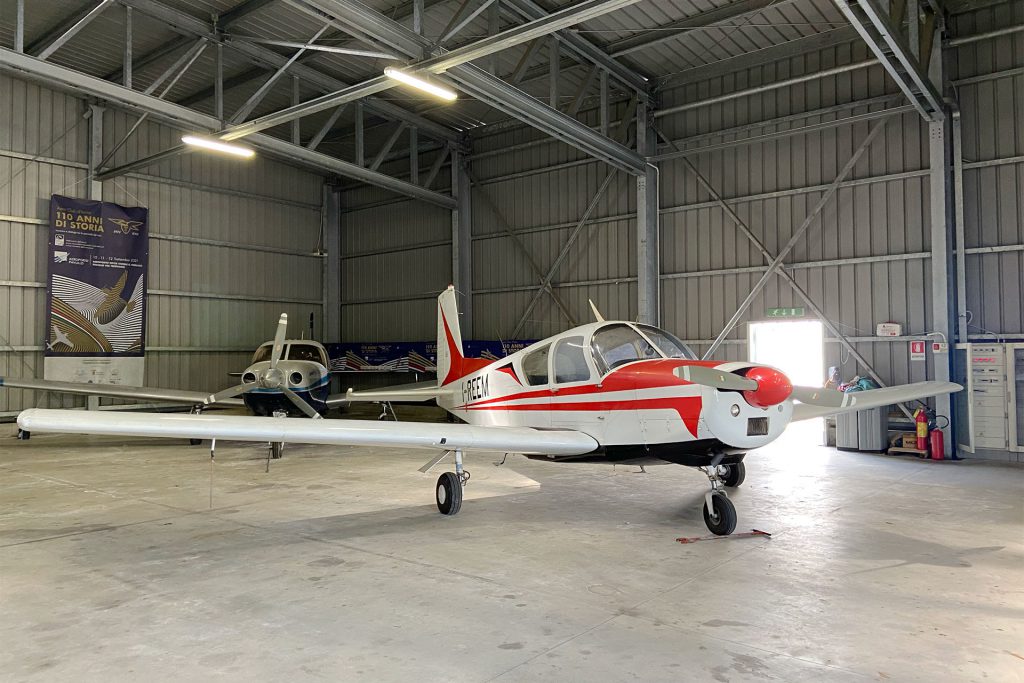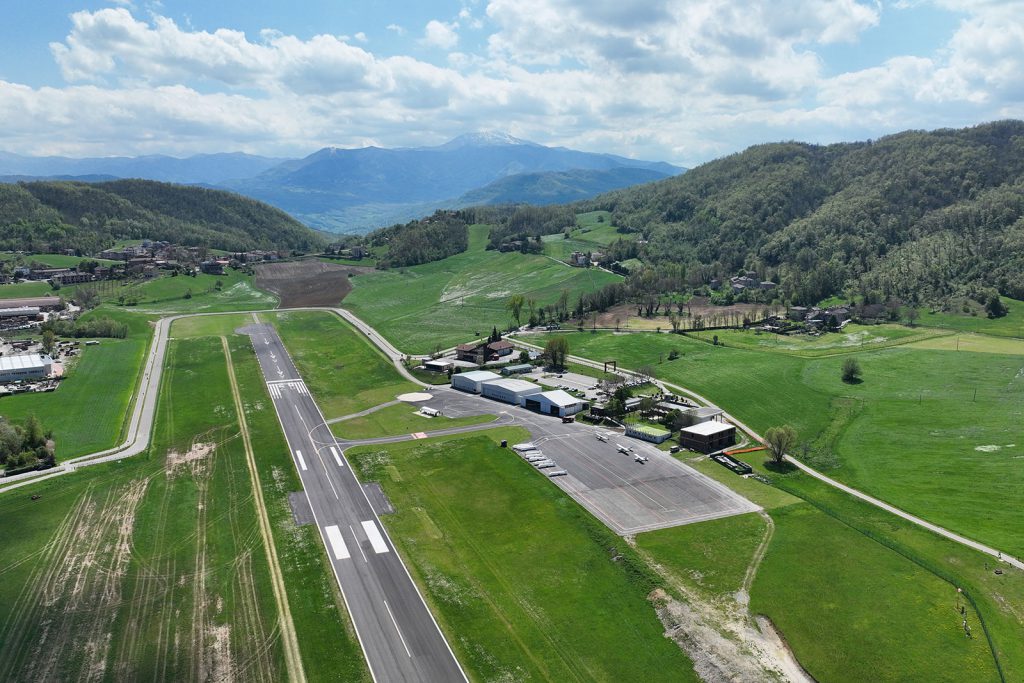Practicing “Gliding” means flying a sailplane without the use of mechanical propulsion apparatus. A good flyer sees the air around him as a huge reservoir from which to draw the energy he needs. The glider is currently the ultimate practical expression of more than a century of aerodynamic knowledge: the lift generated by the most modern wings is more than 60 times greater than the drag opposed to the advancement (we define this concept by the term “1 to 60 efficiency”). In other words, for every 100 meters of altitude lost such a glider travels 6 kilometers in distance. Even the designers of modern jetliners adopt aerodynamic solutions extrapolated from the aerodynamic studies of modern sailplanes.
A glider can use various arrangements or systems to take off. For example, by towing a powered aircraft; or by the pull exerted by a cable (up to a couple of kilometers long) that coils quickly over a powerful winch fixed to the ground; or with autonomous takeoff, for some types of gliders. Once in the air, the glider slowly but surely descends. In fact, the potential energy possessed by virtue of the altitude reached is transformed into kinetic energy, hence translation velocity, to overcome aerodynamic drag and glide in search of energy. If the pilot can find an area where the air is not static, but rises upward, and he can keep his glider in it, then he will climb with it, gaining altitude again.
Wind is not solely responsible for the vertical movements of an air mass: the sun, on a fine day, warms the ground, and the latter warms the air by a thin layer (a few tens of meters) in contact with it; like a hot air balloon, even the warmed air tends to rise and organize itself into an invisible, narrow ascending column that we call “a thermal.” The experienced pilot keeps his glider inside the thermal as long as possible, making a series of spirals exactly like soaring birds such as raptors and storks. A normal thermal is 100 to 400 meters in diameter, and rises until it reaches an equilibrium altitude that also depends on the temperature difference from the surrounding air; often this means gaining, then rising, for at least 1,000 or even 3,000 meters. If the glider then travels a line parallel to a wind-swept slope, the dynamic activity of the wind rising after beating against the slope will be added to the thermal activity.
While in all motor sports, sooner or later, the thrust of the engine creates habit and ceases to amaze, the thrill that grips the gliding pilot is intense and endless: the atmosphere is alive and communicates to him sensations that bring him closer to the most majestic birds; the gliding pilot is not just a pilot, he is a man with wings.
Towing
The Pavullo Aero Club allows gliders to take off either by motor towing or winching. For towing operations, the Club provides a motor-powered aircraft (Robin DR400-235) and qualified tows.
Sports activities
Since 2005, the passion for Gliding in the Apennines of Modena has taken on a more sporting and competitive connotation: the altitude, proximity to Cimone and Pavullo’s logistical facilities have always lent themselves to the needs of Emilian gliders and those from Romagna and Tuscany. But since the mid-2000s, a group, a team of enthusiasts, has been created that, within a few years, has managed to create a quality sports team capable of triumphing for six editions -so far- in the National Distance Flying Championships (2009, 2011, 2012, 2015, 2016 e 2019). Adding to the many team successes are the considerable podiums achieved by Aero Club pilots in individual categories.
For several years, the best gliders from Italy and abroad have been making flights of more than 800 km in the Apennines but, the desire of all, has always been to reach the goal of 1000 km. In 2017, three club members (Paolo Ruggeri, Romeo Monti and Paolo Guardigli) succeeded in this incredible feat by making four flights of more than 1,000 km along the Apennine ridge, the first time ever with gliders of 18 m wing length.
Today, in terms of sports activities, Pavullo and the Aero Club represent one of the most important centers nationwide. All thanks to unabated airport development and an overflowing passion that has already infected scores of enthusiasts.
To better prepare for the sport, individual or group courses are available at Aero Club Pavullo for perfecting flying techniques in distance flying.
